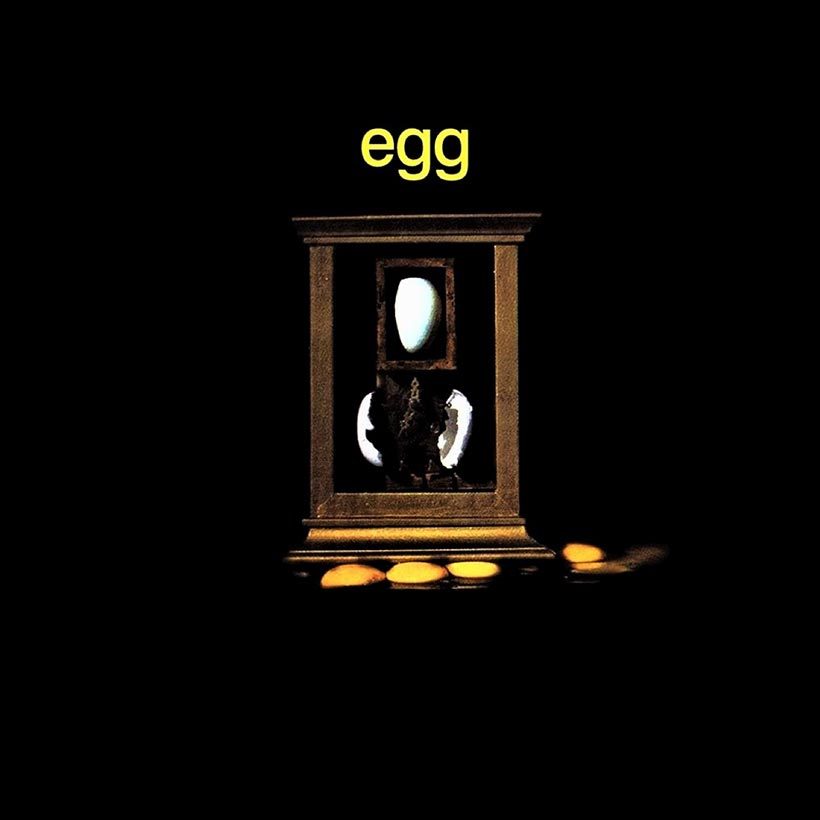Egg: The Story Behind The Self-Titled Debut By The Prog Rock Greats
On March 13, 1970, the three-piece released their self-titled debut album on Decca’s short-lived Nova imprint.

Egg’s fertilization was at the City of London School, when a band named Uriel (after one of the archangels) was formed by guitarist Steve Hillage, organist Dave Stewart, Mont Campbell on bass and vocals. After Hillage left, they named themselves Egg, allegedly because Uriel “sounded too much like ‘urinal’,” and recruited drummer Clive Brooks via an advert in The Melody Maker. In mid-1969 Egg signed to Decca’s more credibly focused subsidiary Deram to record their first album.
On March 13, 1970, the three-piece released their self-titled debut album on the label’s short-lived Nova imprint. The album was recorded in October 1969 at Lansdowne and Trident studios, while Stewart and Campbell were still teenagers, which makes their achievements all the more laudable. Their debut album employs unusual time signatures, as well as classical influences on numbers such as “Fugue in D Minor” written by Bach. Mont Campbell, the band’s main composer, acknowledged the strong influence of Igor Stravinsky, which inspired the writing of the 22-minute long “Symphony n°2; that takes up the whole of side 2 of the original LP – the first movement uses part of Grieg’s “In The Hall of The Mountain King” from his Peer Gynt Suite.
Egg‘s debut album can be bought here.
The band set off in support of the album, playing such gigs as The Redhill & Reigate Arts Workshop, in the back room of The Greyhound pub on the Brighton Road in Redhill. But despite their great live sets, it did not propel the album into the charts. However, it was sufficiently well received to encourage Decca to set about recording a second album, in May 1970. This one was produced by blues-loving producer Neil Slavin rather than the band themselves.
When it was finished, Deram got cold feet, but Slavin finally persuaded them to release, The Polite Force in February 1971. Despite new management and critical acceptance, as well as more gigs, Deram decided to drop the band. Come the summer of 1972, Egg were fried.
In 1972, Stewart was a guest in Hillage’s new band, Khan, before joining Hatfield and the North, the much loved “Canterbury Band.” The Hatfield’s were signed to Virgin, and Hillage persuaded the label to record Egg’s unreleased material and the resulting album came out in 1974 as The Civil Surface. After the Hatfields broke up, Stewart played with Gong occasionally, before forming National Health.
By the 80s, Stewart had changed musical direction and had a hit with an electro-pop version of Jimmy Ruffin’s Motown classic “What Becomes of the Brokenhearted” featuring former Zombies vocalist Colin Blunstone. It made the UK top 20, but this was easily eclipsed later in 1981 by a version of Lesley Gore’s “It’s My Party” featuring former Hatfield backing vocalist Barbara Gaskin that topped the UK charts for a month. The duo made a number of albums while Stewart also found success as a composer of TV themes including The Old Grey Whistle Test.
Campbell quit rock music after a spell in National Health and took up a career in world music, while Brooks joined blues band The Groundhogs before becoming the drum technician for Pink Floyd in the late 1970s, working with the band through to 1994.













chris
September 27, 2020 at 8:41 pm
Really need to get in touch with Mont. He will remember several photo sessions in gthe early 70’s. I sent some to the band about 10 years back but I now have discovered a whole bunch of colour pix. Mont, Dave and Clive. Get in touch with me…
mail@chris-richardson.net